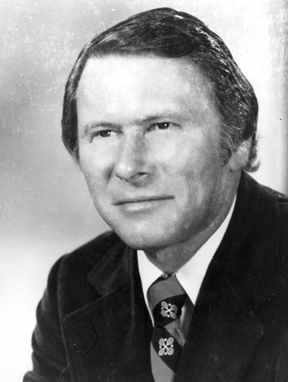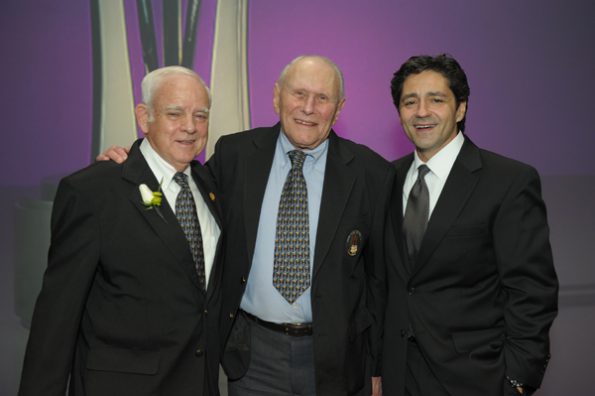A Promotional Life
Harry Rosenberg, CAS, has had a front-row seat to change during his extraordinary 64-year career
 You might think that after such a lengthy career as an industry supplier, consultant and Association volunteer, Harry Rosenberg, president of Specialty Advertising Consultants, Inc. (UPIC: SPEC0026), might want to take it easy. Maybe relax a little. Even retire. But at age 89, Rosenberg isn’t ready to give up on his passion for promotion: he still has a foot in the industry as a part-time consultant and he has an office at distributor Advertising Premium Sales, Inc. where he “sells an order now and then.” Then there are the writing projects he’s working on as well.
You might think that after such a lengthy career as an industry supplier, consultant and Association volunteer, Harry Rosenberg, president of Specialty Advertising Consultants, Inc. (UPIC: SPEC0026), might want to take it easy. Maybe relax a little. Even retire. But at age 89, Rosenberg isn’t ready to give up on his passion for promotion: he still has a foot in the industry as a part-time consultant and he has an office at distributor Advertising Premium Sales, Inc. where he “sells an order now and then.” Then there are the writing projects he’s working on as well.
As a self-proclaimed history buff, Rosenberg knows a lot about history—and wants others to share in his passion. “I wrote a book called Ameriquiz #1. It has questions about the U.S. history, the flag, famous people, scenic areas and international questions as well,” Rosenberg says. He is hoping it will sell to an industry supplier, and in the meantime he’s writing Ameriquiz #2. “It’s a unique puzzle that contains 2,508 words or more taken from state names. Would you believe that I found 18 words from the letters in Texas alone?”
Rosenberg’s other passion is his family. He and his wife, Virginia, or “Ginny,” as he calls her, have been married for 66 years. “I knew her from grade school. Her folks and my folks were friends. I think it was a setup!” The Rosenbergs raised two children, Harry, Jr. “Buzz”, 63, and Ellen, 61, and they have six grandchildren and one great-grandchild.
What was your first job in the industry and how did it come about?
My family had a company called Universal Match Corporation. My uncle, I believe, had the original idea for designing on a matchbook back in 1922. We had salesmen all around the country and we made wood matches during World War II. My uncle created waterproof wood matches for the military. When I first started working there after a semester at Washington University, I was thrown on the printing press. Then I went into the advertising department for a while. Then in 1950, the company was sold.
My dad and I were looking for something new to take up. We found 30 acres in a suburb of St. Louis. On that 30 acres was a company called Ritepoint. Ritepoint was for sale, as was the 30 acres. We bought the 30 acres and then I, along with two associates of mine, Robert Hurwitz and Jerry Spitzer, who were brothers-in-law, bought Ritepoint. The company manufactured writing instruments such as ballpoint pens, plus coasters, cigarette lighters and a number of different things made from molded plastic and some metal. The company had been in business for a number of years and had a very good reputation in St. Louis and around the country as a writing instrument manufacturer. I became the vice president of sales and when we sold the business in 1976 and my partners left, I became president. I stayed until 1980 when I subsequently retired as a supplier.
How did you first get involved with PPAI?
A good friend of mine, Jack Wright with Vitronic, was on the PPAI Board of Directors and wanted to quit because he had other business interests and the board was taking too much time. He recommended to the board that I replace him. And for some crazy reason they agreed. I got in there and then at the end of my four-year term, I ended up being chairman from 1975-76. At that time, the president of the Association, Bob Rollings, and I became very good friends and we did a lot of things together. One of the things we did was create PPB magazine [then called Specialty Advertising Business] because we were growing and we needed a better publication. It worked very well and it grew as the Association grew. For a year, I wrote a monthly article in the magazine critiquing company catalogs that I thought needed help. Some people still call me today to critique their catalogs, which I do for free. The other thing [Bob Rollings and I did] was planning to move the Association from Chicago to Irving, Texas. We ended up finding the property that they built the first building on. [Rosenberg was inducted into the PPAI Hall of Fame in 1983].
Later on, George Matteson (who had a playing-card company in Kansas City) and I got together and were teachers in the CAS certification program. He taught about money and I taught about sales, and we travelled for four or five years as CAS educators. It was great. We had a number of sessions during the year all over the country that lasted about a week at a time.
How did trade shows evolve during your career?
From the early 1940s to the mid-1970s, the main show of the year was at the Palmer House Hotel in Chicago. My company, Ritepoint, and Skinner & Kennedy, Vitronic and Len Bray were all St. Louis companies and we all had one section of the hall on the seventh floor. We had a room where we could set up a bar and have food and when a distributor walked in you could close the door and talk to them for an hour. It was really great. Of course now you can’t do that, you’ve got eight million people running around the floors. We kept outgrowing the venues, first in Chicago, then in Dallas. When the show moved to Las Vegas, the first year we went, the parking lot hadn’t even been finished yet.
What did you do after you sold Ritepoint?
I became a consultant to industry suppliers. I created Specialty Advertising Consultants and I was one of the first consultants in the industry so I was in a very good position. I helped a lot of companies—at least 30 or 40 suppliers—start out in the industry. They would pay me $500 for a booth and I got them their tables and their locations and everything they needed. They would bring their stuff and show. They had an area when it was in Dallas that was limited to the new suppliers since new suppliers didn’t yet have points [for booth locations] if they weren’t yet members of PPAI. New suppliers could come to three shows and then they had to decide if they were going to be members or not.
I really started building up a trade. When the PPAI Show was in Dallas, they had a lower level at the convention center and they put us down there. The second year on the lower level, I had 42 booths. I was right below the area where the escalators came down and went up. So as the show got bigger, some of the suppliers who were members started yelling because I had points but my people didn’t and we were right at the bottom of the escalator. So they insisted that we move. They moved me to the far end of the lower level, so we started a new area down there. But they forgot that the parking lot was at that end. So people would walk in from the parking lot right into our area, so the upstairs was vacant for the first hour or so because these guys were coming to our area. Guys from about five or six big companies came downstairs and said, “Harry, can we get into your area?” because that’s where the action was for the first hour of the show.

Harry Rosenberg with PPAI President and CEO Paul Bellantone, CAE, (right) and 2004 Hall of Fame Inductee Bill Bywater of Bankers Advertising Company (left) at the 2013 PPAI Chairman’s Leadership Dinner at the PPAI Expo in Las Vegas.
Julie Richie is associate editor for PPB.

